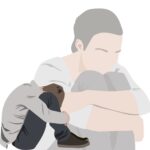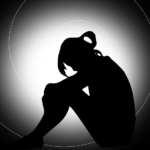Acute stress disorder (ASD) was added to the DSM-IV 20 years ago, but not much is known about how common it is, especially in the general community. ASD is a different diagnosis from PTSD, but the only difference is how long the symptoms last. This makes it harder to figure out how common ASD is. The rate of ASD varies a lot depending on the study and the type of stress. The rates of ASD were found to be 24.0% to 24.6% less than one week after an injury and 11.7% to 40.6% one to two weeks after an accident.
Survey-based studies show that twenty to ninety percent of people have at least one very stressful event happen to them in their life. Even though a lot of people are vulnerable, only 1.3% to 11.2% of people with ASD went on to develop a long-term disease with symptoms, like PTSD.
Studies show that ASD is the main cause of problems in many areas of living. It affects people of all ages and affects both mental and physical health. However, it makes life less enjoyable and social events less fun. Therefore, diagnosis and treatment of this disorder is imperative for optimal functioning. The diagnostic criteria and features of ASD in light of DSM 5 TR are outlined below:
Diagnostic Criteria
A. Being exposed to death, major damage, or sexual violence in one or more of the ways below, or being threatened with them:
1. Going through the painful event(s) firsthand.
2. Being there in person to see the event(s) as other people saw them.
3. Learning that the event(s) happened to a close family member or close friend.
Note: If a family member or friend was killed or was about to be killed, the event(s) must have been violent or accidental.
4. Being exposed to the painful event(s) over and over again or in a very strong way (for example, first responders receiving dead bodies or police officers being exposed to details of child abuse over and over again).
Note: This does not cover exposure from electronic media like TV, movies, or pictures unless the exposure is connected to work.
B. Having nine or more of the following symptoms from any of the five groups: intrusion, negative mood, dissociation, avoidance, and arousal, starting or getting worse after the stressful event(s):
Intrusion Symptoms
1. Recurrent, involuntary, and intense upsetting thoughts of the stressful event(s). Note: Children may play over and over again, and in those games, they may show themes or parts of the stressful event(s).
2. Frequent, upsetting dreams about the event(s) that have something to do with the dream’s content or mood. Note: Kids can have scary dreams that don’t make sense.
3. The person feels or acts as if the stressful event(s) are happening again, which is known as a dissociative response. (These kinds of responses can happen on a scale, with losing consciousness being the worst.) It’s important to note that children may recreate stress in their play.
4. Severe or long-lasting mental discomfort or clear physical responses to internal or external cues that represent or look like a part of the stressful event(s).
Negative Mood
5. The persistent inability to feel good emotions, such as the inability to feel happy, satisfied, or caring.
Dissociative Symptoms
6. A change in how real one’s surroundings or oneself seems (for example, seeing oneself from someone else’s point of view, being in a daze, or time slowing down).
7. Not being able to remember an important part of the traumatic event(s) (usually because of detached amnesia and not after a head injury, drinking, or using drugs).
Avoidance Symptoms
8. Trying to stay away from memories, thoughts, or feelings that are upsetting and related to the stressful event(s).
9. Trying to stay away from things, people, places, talks, activities, items, and situations that bring up upsetting memories, thoughts, or feelings related to or connected to the traumatic event(s).
Arousal Symptoms
10. Sleep disturbance (e.g., trouble going or staying asleep, restless sleep).
11. Irritable behavior and bouts of anger that happen with little or no reason, usually by being violent or screaming at people or things.
12. Being too alert.
13. Having trouble focusing.
14. A shock reaction that is too strong.
C. The disturbance (the signs in Criterion B) lasts three days to one month after the shock.
Note: Symptoms usually start immediately after the stress, but they have to last for at least three days and no more than one month to meet the standards for a disorder.
D. The disturbance leads to sadness or problems in social, professional, or other important areas of functioning that are clinically serious.
E. The disturbance is not caused by the effects of a drug (like booze or medicine) or a medical condition (like a mild traumatic brain injury) and there aren’t any other conditions that would explain it better.
Diagnostic Features
- After one or more stressful incidents, acute stress disorder symptoms persist for three days to one month (Criterion A). These symptoms match PTSD Criterion A (see “Diagnostic Features” for PTSD).
- The symptoms of acute stress disorder vary, but most entail an anxious reaction to the stressful experience.
- Intrusion, negative mood, disconnectedness, avoidance, and excitation symptoms are signs (Criterion B1–B14).
- Dissociated or detached looks may be the predominant trait, yet these people frequently have significant emotional or bodily reactions to trauma reminders.
- A strong anger reaction might cause restlessness or hostility in certain people.
- PTSD Criterion B1–B5 intrusion symptoms resemble “Diagnostic Features” symptoms.
- Remember that acute stress disorder Criterion B4 covers PTSD Criterion B4 and B5.
- Acute stress disorder can prevent people from feeling happiness, joy, fulfillment, intimacy, compassion, or sexuality. However, they may experience fear, despair, rage, guilt, or humiliation (Criterion B5).
- Depersonalization and derealization are changes in awareness that can cause one to think things are moving slowly, see things in a daze, or not notice events that one would normally encode (Criterion B6).
- Some say they cannot remember a crucial portion of the distressing incident that was undoubtedly stored in their brain.
- Criteria B7 states that dissociative forgetting causes this illness, not head injuries, alcohol, or narcotics.
- Avoiding pain-related stimuli is consistent.
- The person may distract themselves or use drugs to block out internal reminders of the event (Criterion B8), as well as conversations, activities, places, things, or people that remind them of it (Criterion B9).
- Many persons with acute stress disorder have problems sleeping and keeping asleep.
- This may be due to nightmares, safety concerns, or heightened alertness that prevents sleep (Criterion B10).
- Acute stress disorder can cause people to shout, fight, or smash items without being provoked (Criterion B11).
- After a car accident, people with acute stress disorder are more aware of the dangers of cars and trucks, as well as those unrelated to the trauma (Criterion B12).
- Concentration issues (Criterion B13) might cause someone to forget their phone number, or everyday events like finishing a book or newspaper, or focus on one thing for a long period, like listening to a speaker.
- Acute stress disorder sufferers may jump or be startled by loud noises like ringing phones or unexpected sights (Criterion B14).
- Startle answers are automatic and immediate.
- Strong startle reactions (Criterion B14) are not always associated with stress.
- After a traumatic occurrence, three days to one month should pass (Criterion C).
- Symptoms following an event that lasts less than three days are not acute stress disorder.
I am a passionate and knowledgeable psychologist, with a Master of Philosophy (MPhil) in Psychology specializing in Counseling Psychology. Through my writing, I share my insights and thoughts on various psychiatric disorders, conduct analysis on films that touch on psychological issues, and explore other topics related to psychology, while also providing valuable information to psychology enthusiasts, students as well the general community.





